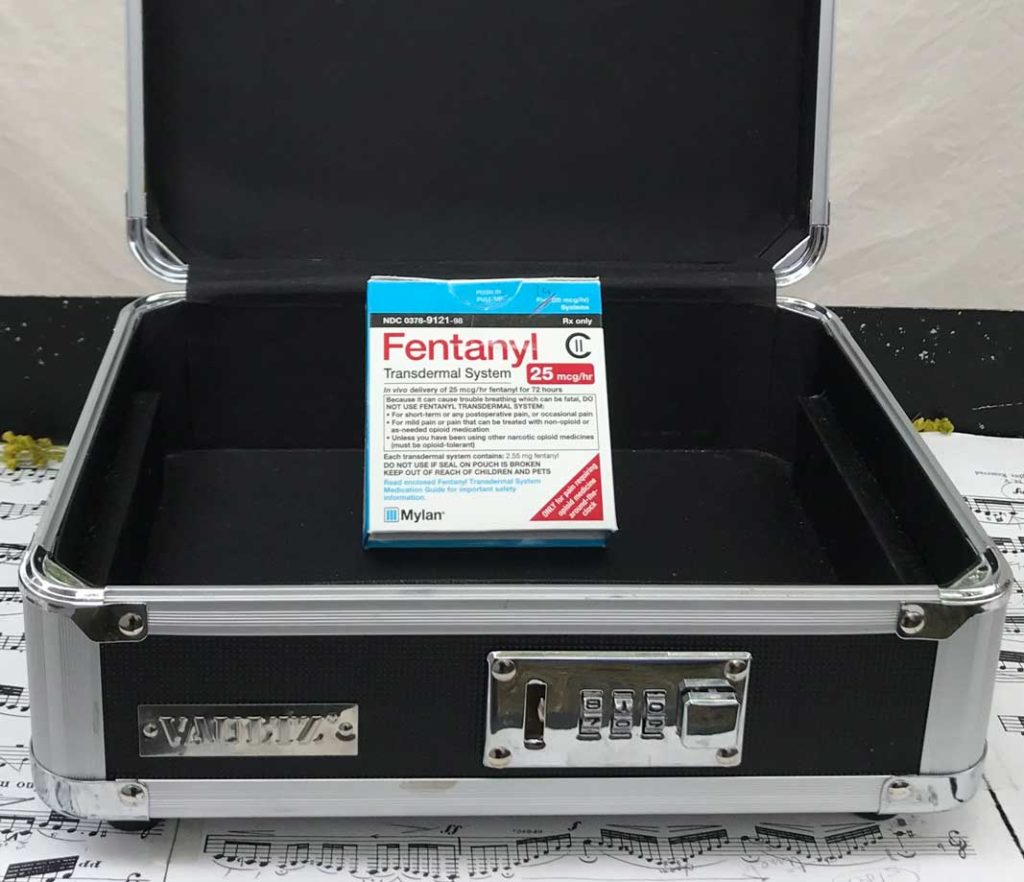By Kelly F. Merrill

Unintended Consequences
Attempts to muscle the Opioid Crisis into submission have been a total failure. Predictably, policy crackdowns on opioid pain-relievers were useless in mitigating overdoses due to illicit-fentanyl, which continue to rise. In 2017 alone, 72,000 people died of overdoses in the U.S. – more than the Vietnam, Iraq and Afghanistan wars combined. Worse still, the very measures intended to curb the Crisis have had devastating consequences for pain patients and the doctors who treat them.
The most far-reaching consequences began with the controversial CDC Guideline for Prescribing Opioids for Chronic Pain in 2016. Though intended to be voluntary recommendations for primary care physicians, the Guideline was widely adopted by states as law. And DEA fueled the country’s anti-opioid fervor using the Prescription Drug Monitoring Program to ramp up targeting and prosecuting of physicians – even going so far as to raid the clinic of renowned Dr. Forest Tennant, who’d won a lifetime achievement award for his work in pain medicine two months prior.
The most conscientious of practitioners became fearful, administrators got nervous and everyone began thinking about liability. As a result, too many patients have suffered outright abandonment, forced discontinuation or radical reductions in the opioid analgesics they require to function. It’s lead to dangerous and lethal, unintended consequences for patients in the form of street drugs, cardiac events, suicides and mercy killings.
Thomas Kline, M.D., a former Harvard Medical School program administrator, has been documenting patient suicides since the wide-scale misapplication and adoption of the CDC Guidelines by states. “We have a terrible problem, we have people committing suicide for no other reason than being forced to discontinue opioids – pain medications – for chronic pain,” he urges. “It’s one of the worst health care crises in our history. There are millions being tortured.”
Push-back
As a result of the hostile regulatory and legislative environment, few providers are willing to take on patients who require opioid analgesics – even those in suicidal levels of pain – as evidenced in a 99-page report by Human Rights’ Watch released in December of 2018, detailing the harmful, real-world consequences of the country’s failed efforts to control the Opioid Crisis.
In March, the collective voices of over 300 medical professionals, including three former drug czars, weighed in – collectively calling for clarification of the CDC Guideline that is being misused to discontinue or precipitously reduce opioids at the peril of patients.
By April, FDA took the unusual measure of issuing a Safety Communication, warning physicians not to abruptly discontinue or rapidly reduce dosages due to reports of serious patient harm, including acute withdrawal, unmitigated pain, psychological distress, and suicide.
Then, one day after the warning and three tumultuous years after the publication of the Guideline in 2016, the CDC finally responded to the community’s concerns. “The Guideline,” issued Director Robert Redfield, “does not endorse mandated or abrupt dose reduction or discontinuation” and that physicians should work to “reduce dosage only when patient harm outweighs patient benefit of opioid therapy.” (emphasis included.)
Prognosis
Brian Kaufman, D.O., owner of Total Health & Spine, is a board-certified Pain and Addiction Medicine specialist. He believes this is a long overdue clarification of the CDC Guideline and a significant change in tone from FDA. “I am hopeful this signals a pendulum shift that results in both governmental regulatory change, as well as the medical community being more moderate in their approach to these unfortunate patients.”
For many, these developments are too little too late. There are large swathes of the state where there is no longer pain management available for patients. Veterans, grandparents, mothers and lobstermen alike have told me their stories – about the impact of untreated pain – how their lives are forfeit because they are ill and cannot find care.
Patients tell me they just want a piece of their lives back – to go to work, spend time with their kids, attend church, mow their lawn, walk their dog or just be of use. And after enduring failed interventional therapies and damaging surgeries that leave people in pieces, opioid pain-relievers – the very drugs that have been so maligned – are compassionate chemistry that allows people to function in the world.
*****
If you are a pain patient, caregiver, physician, pharmacist or another medical professional who has been impacted by the Opioid Crisis, please email me at merrillWEN@gmail.com or find me on Facebook at Pain Advocacy Alliance.
__________________________________________________________________________
Merrill is an activist and artist. She has navigated medical systems and pursued relief in the U.S. and South America and is informed by her experience consulting with experts in the field. She worked as a paralegal at FDA law firm Hyman, Phelps & McNamara in Washington, D.C., where she also wrote for Dietary Supplement & Food Labeling News.
REFERENCES
https://www.hrw.org/report/2018/12/18/not-allowed-be-compassionate/chronic-pain-overdose-crisis-and-unintended-harms-us Mills, Laura et al. “”Not Allowed to Be Compassionate” | Chronic Pain, the Overdose Crisis, and Unintended Harms in the US.” Human Rights Watch. December 18, 2018. (“HRW Report”)
https://www.fda.gov/Drugs/DrugSafety/ucm635038.htm?utm_campaign=FDA%20MedWatch-Opioid%20Pain%20Medicines%3A%20Drug%20Safety%20Communication&utm_medium=email&utm_source=Eloqua U.S. Food and Drug Administration, FDA Safety Announcement “FDA identifies harm reported from sudden discontinuation of opioid pain medicines and requires label changes to guide prescribers on gradual, individualized tapering.” (Feb. 9, 2019) (“FDA Safety Annoucement”)
https://healthprofessionalsforpatientsinpain.org/the-letter-1 Alford, Daniel Health Care Professionals for Patients in Pain to CDC, “Health Professionals Call on the CDC to Address Misapplication of its Guideline on Opioids for Chronic Pain through Public Clarification and Impact Evaluation,” March 6, 2019. (“300HCP letter”)
https://img1.wsimg.com/blobby/go/3d70257f-a143-4a5b-b9df-f7d265df0d3d/downloads/Alford%20Final%20.pdf?ver=1554957603807 Redfield, Robert. CDC Director Robert Redfield response letter to Daniel Alford, April 10, 2019 (“CDC Response Letter”)
https://www.cdc.gov/mmwr/volumes/65/rr/rr6501e1.htm U.S. Centers for Disease Control, CDC Guideline for Prescribing Opioids for Chronic Pain — United States, 2016 (March 18, 2016) (“CDC Guideline”)
RESOURCES
Anson, Pat. “Why I Am Closing My Pain Practice.” Pain News Network. January 17, 2018. Accessed April 29, 2019. https://www.painnewsnetwork.org/stories/2018/1/17/why-i-am-closing-my-pain-practice.
Anson, Pat. “AMA: ‘Inappropriate Use’ of CDC Guideline Should Stop.” Pain News Network. November 14, 2018. Accessed April 29, 2019. https://www.painnewsnetwork.org/stories/2018/11/14/ama-calls-for-misapplication-of-cdc-opioid-guideline-to-end.
Anson, Pat. “Medicare Finalizes Plan to Reduce High Dose Opioids.” Pain News Network. April 02, 2018. Accessed April 29, 2019. https://www.painnewsnetwork.org/stories/2018/4/2/medicare-finalizes-plan-to-reduce-high-dose-opioids.
Bernstein, Lenny. “Health-care Providers Say CDC’s Opioid Guidelines Are Harming Pain Patients.” The Washington Post. March 06, 2019. Accessed April 29, 2019. https://www.washingtonpost.com/national/health-science/health-care-providers-say-cdcs-opioid-guidelines-are-harming-pain-patients/2019/03/06/be5fa49c-4066-11e9-9361-301ffb5bd5e6_story.html.
Bloom, Josh. “Have Opioid Restrictions Made Things Better or Worse?” American Council on Science and Health. November 03, 2016. Accessed April 29, 2019. https://www.acsh.org/news/2016/11/03/have-opioid-restrictions-made-things-better-or-worse-10400.
Bloom, Josh. “Merciless in Seattle: Untreated Pain, Misery, and Suicide.” ACSH. November 1, 2016. Accessed April 29, 2019. https://www.acsh.org/news/2016/11/01/merciless-seattle-untreated-pain-misery-and-suicide-10389.
Bloom, Josh. “The Opioid Epidemic in 6 Charts Designed To Deceive You.” American Council on Science and Health. October 12, 2017. Accessed April 29, 2019. https://www.acsh.org/news/2017/10/12/opioid-epidemic-6-charts-designed-deceive-you-11935.
City News Service, and City News Service. “Not Guilty Plea for Steve Clute, Accused of Helping His Wife, Former UC Riverside Educator Pam Clute, Commit Suicide.” Press Enterprise. December 06, 2017. Accessed April 29, 2019. https://www.pe.com/2017/12/06/not-guilty-plea-for-steve-clute-accused-of-helping-wife-pam-clute-commit-suicide/.
Ehley, Brianna, Sarah Karlin-Smith, Brianna Ehley, Sarah Karlin-Smith, Brianna Ehley, and Josh Meyer. “How the Opioid Crackdown Is Backfiring.” POLITICO. August 28, 2018. Accessed April 29, 2019. https://www.politico.com/story/2018/08/28/how-the-opioid-crackdown-is-backfiring-752183.
Fox, Maggie. “Pain Patients Beg FDA for More Options, Easier Access to Opioids: People with Chronic Conditions Cope with Prescription Restrictions and Limited Alternative Therapies amid the Nation’s Opioid Crackdown.” NBCNews.com. July 10, 2018. Accessed April 29, 2019. https://www.nbcnews.com/storyline/americas-heroin-epidemic/pain-patients-beg-fda-more-options-easier-access-opioids-n890081.
Frieden, Joyce. “AMA Delegates Back Physician Freedom in Opioid Prescribing.” Medpage Today. November 13, 2018. Accessed April 29, 2019. https://www.medpagetoday.com/meetingcoverage/ama/76322.
Glanz, Jason M., Ingrid A. Binswanger, Susan M. Shetterly, Komal J. Narwaney, and Stan Xu. “Association Between Opioid Dose Variability and Opioid Overdose Among Adults Prescribed Long-term Opioid Therapy.” JAMA Network Open2, no. 4. April 19, 2019. Accessed April 29, 2019. https://jamanetwork.com/journals/jamanetworkopen/fullarticle/2730786
Hoffman, Jan, and Anny Goodnough. “Good News: Opioid Prescribing Fell. The Bad? Pain Patients Suffer, Doctors Say.” New York Times, March 6, 2019. Accessed April 29, 2019. https://www.nytimes.com/2019/03/06/health/opioids-pain-cdc-guidelines.html
Johnson, Julie. “Felony Charge Dismissed for Man Who Said He Helped Wife Hang Herself.” Santa Rosa Press Democrat. August 18, 2018. Accessed April 29, 2019. https://www.pressdemocrat.com/news/8639079-181/charge-dismissed-against-petaluma-man.
Leonhardt, David. “Opioid Overreaction.” The New York Times. March 29, 2019. Accessed April 29, 2019. https://www.nytimes.com/2019/03/29/opinion/opioid-crisis-chronic-pain.html.
Llorente, Elizabeth. “As Doctors Taper or End Opioid Prescriptions, Many Patients Driven to Despair, Suicide.” Fox News. December 10, 2018. Accessed April 29, 2019. https://www.foxnews.com/health/as-opioids-become-taboo-doctors-taper-down-or-abandon-pain-patients-driving-many-to-suicide.amp.
Llorente, Elizabeth. “Doctors Caught between Struggling Opioid Patients and Crackdown on Prescriptions.” Fox News. December 11, 2018. Accessed April 29, 2019. https://www.foxnews.com/health/doctors-abandon-opioid-prescribing-as-state-and-federal-authorities-step-up-enforcement.
Mills, Laura. “Not Allowed to Be Compassionate | Chronic Pain, the Overdose Crisis, and Unintended Harms in the US.” Human Rights Watch. December 18, 2018. Accessed April 29, 2019. https://www.hrw.org/report/2018/12/18/not-allowed-be-compassionate/chronic-pain-overdose-crisis-and-unintended-harms-us.
Mills, Laura, Kate Nicholson, and Lindsay Baran. “60 Minutes Fails to Represent Pain Patient Perspective.” Human Rights Watch. March 05, 2019. Accessed April 29, 2019. https://www.hrw.org/news/2019/03/05/60-minutes-fails-represent-pain-patient-perspective.
Nicholson, Kate M., Diane E. Hoffman, and Chad D. Kollas. “How the CDC’s Opioid Prescribing Guideline Is Harming Pain Patients.” STAT. December 06, 2018. Accessed April 29, 2019. https://www.statnews.com/2018/12/06/overzealous-use-cdc-opioid-prescribing-guideline/.
Oquendo, Maria A., and Nora D. Volkow. “Suicide: A Silent Contributor to Opioid-Overdose Deaths.” New England Journal of Medicine 378, no. 17 (April 26, 2018): 1567-569. https://www.nejm.org/doi/full/10.1056/NEJMp1801417
Preidt, Robert. “Chronic Pain May Drive Some to Suicide – WebMD.” WebMD. September 10, 2018. Accessed April 29, 2019. https://www.webmd.com/pain-management/news/20180910/chronic-pain-may-drive-some-to-suicide.
Szalavitz, Maia. “The Sad Cases of Pain Patients Getting Their Doses Cut and Taking Their Own Lives.” Tonic. November 06, 2017. Accessed April 29, 2019. https://tonic.vice.com/en_us/article/8x5m7g/opioid-crackdown-chronic-pain-patients-suicide.
Szalavitz, Maia. “The DEA Raided This Doctor’s Office for Prescribing High Doses of Painkillers.” Tonic. December 07, 2017. Accessed April 29, 2019. https://tonic.vice.com/en_us/article/a3jd94/dea-raided-chronic-pain-doctor-forest-tennant.
Tennant, Forest. “Sudden, Unexpected Death in Chronic Pain Patients.” Practical Pain Management. September 25, 2012. Accessed April 29, 2019. https://www.practicalpainmanagement.com/sudden-unexpected-death-chronic-pain-patients.
Tompkins, D. Andrew, J. Greg Hobelmann, and Peggy Compton. “Providing Chronic Pain Management in the “Fifth Vital Sign” Era: Historical and Treatment Perspectives on a Modern-day Medical Dilemma.” Drug and Alcohol Dependence 173 (April 1, 2017) 511-21. https://www.ncbi.nlm.nih.gov/pmc/articles/PMC5771233/
Twillman, Robert K., Nicole Hemmenway, Steven D. Passik, Christy A. Thompson, Michael Shrum, and Michael K. Degeorge. “Impact of Opioid Dose Reduction on Individuals with Chronic Pain: Results of an Online Survey.” Journal of Pain Research, 2769th ser., Volume 11, no. 11. (November 8, 2018) https://www.ncbi.nlm.nih.gov/pmc/articles/PMC6235338/
Webster, Lynn. “When Will Forced Tapering of Opioids End So Doctors Can Treat Pain?” Dr Lynn Webster. April 20, 2019. Accessed April 29, 2019. http://www.lynnwebstermd.com/FORCED-TAPERING/.
Webster, Lynn. “How Has CDC Opioid Guideline Affected You?” Pain News Network. March 02, 2019. Accessed April 29, 2019. https://www.painnewsnetwork.org/stories/2019/3/2/how-has-cdc-opioid-guideline-affected-you.




